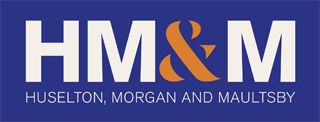Summary
The FASB recently issued ASU 2016-14 (1) to improve the presentation of financial statements of not-for-profit entities such as charities, foundations, universities, and nonprofit health care providers, etc. This is the first major change to the nonprofit financial statement model in over 20 years, which is intended to provide more useful information to donors, grantors and other users. The ASU becomes effective for fiscal years beginning after December 15, 2017.
Details
ASU 2016-14 impacts all not-for-profit entities in the scope of Topic 958, as well as health care entities subject to the nonprofit guidance in Topic 954. The ASU addresses the following key qualitative and quantitative matters:
Net asset classes
Investment return
Expenses
Liquidity and availability of resources
Presentation of operating cash flows
In addition, the ASU includes illustrative financial statements of not-for-profit entities, which reflect changes made by the new standard.
Net asset classes
On the balance sheet, the ASU replaces the current presentation of three classes of net assets (unrestricted, temporarily restricted, and permanently restricted) with two classes of net assets – net assets with donor restrictions and net assets without donor restrictions. As such, entities will no longer distinguish between temporary and permanent restrictions on the face of the statements. In addition, the net asset classification of underwater amounts of donor-restricted endowment funds will be classified as part of net assets with donor restrictions. Additional disclosures related to these underwater endowment funds are required.
The new standard retains the current requirements to provide information about the nature and amounts of different types of donor-imposed restrictions and the need to highlight how these restrictions affect the use of the resources and their impact on liquidity.
The ASU eliminates the over-time approach for the expiration of restrictions on capital gifts and requires the use of the placed-in-service approach in the absence of donor explicit stipulations.
Investment return
On the statement of activities, an NFP will present the amount of the change in each of the two net asset classes above. In addition, the ASU requires investment return to be presented net of all related external and direct internal expenses. It eliminates the current requirement to disclose the amount of such netted expenses.
Expenses
Under current standards, not-for-profit entities must present expenses by function. The ASU introduces a requirement to present expenses by nature and function, as well as an analysis of these expenses in one location to help users assess how an NFP uses its resources.(2) This analysis can be presented on the face of the statement of activities, as a separate statement, or in the notes to the financial statements. It should be supplemented with enhanced disclosures about the methods used to allocate costs among the functions.
Presentation of Operating Cash Flows
The ASU maintains the option for nonprofit organizations to present their statement of cash flows using either the direct or indirect method of reporting. If an organization chooses to use the direct method, the reconciliation of changes in net assets to cash provided (used in) operating activities is no longer required.
Liquidity and availability of resources
To improve the ability of financial statement users to assess a nonprofit entity’s available financial resources and the methods by which it manages liquidity and liquidity risk, the ASU requires specific disclosures including:
Qualitative information that communicates how a nonprofit entity manages its liquid available resources to meet cash needs for general expenditures within one year of the balance sheet date.
Quantitative information that communicates the availability of a nonprofit’s financial assets to meet cash needs for general expenditures within one year of the balance sheet date. Items that should be taken into consideration in this analysis are whether the availability of a financial asset is affected by its nature, external limits imposed by grantors, donors, laws and contracts with others, and internal limits imposed by governing board decisions.
Effective Date and Transition
The amendments in ASU 2016-14 are effective for annual financial statements issued for fiscal years beginning after December 15, 2017, and for interim periods within fiscal years beginning after December 15, 2018. Application to interim financial statements is permitted but not required in the initial year of application. The amendments in this ASU can be adopted early. Entities presenting comparative financial statements must apply the amendments retrospectively, although certain optional practical expedients are available for periods prior to adoption.
On the Horizon
This ASU completes the first phase of the Board’s project to improve the financial reporting of not-for-profit entities. In an earlier decision, the Board determined that a second phase would consider other potential changes that are likely to require more time to resolve, including potentially reconsidering intermediate operating measures and certain other enhancements. Interested stakeholders should monitor the FASB website for further developments.
(1) Not-for-Profit Entities (Topic 958) and Health Care Entities (Topic 954) – Presentation of
Financial Statements of Not-for-Profit Entities
(2)See paragraph BC58.
If you have questions on this update, please contact your HM&M advisor
Latest Blog
The landscape of gift and estate tax planning is experiencing significant shifts, with the upcoming 2026 sunset looming ...
Are you planning to make a Qualified Charitable Distribution (QCD) in 2024? Yes? Then read on … A ...
Please refer to the list below for some changes that will be made for 2023 v 2024. Bonus ...
HM&M Updates
Last month, Senior Manager, Pearl Balsara was invited to speak at the 2023 FPA DFW Annual Conference in ...
We are pleased to announce the winners of the 2022 HM&M Excellence Awards. Ronna Beemer, Keith Phillips, and ...
Huselton, Morgan and Maultsby is composed of a spectacular team of individuals. During our annual What’s Happening Meeting, ...









